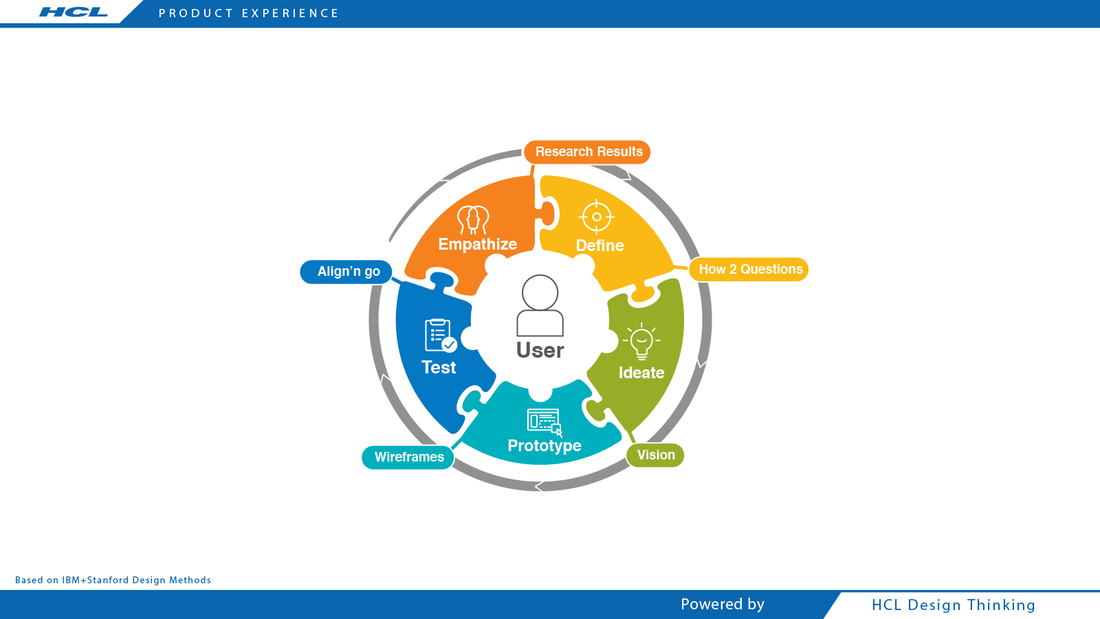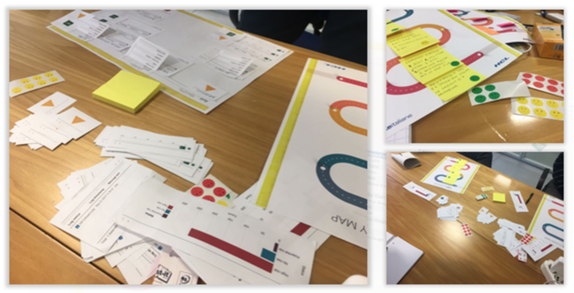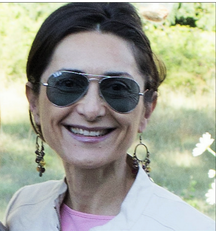|
Explore how in HCL we embraced Design Thinking to design a unique product experience for P&P products, always working with Customers and for Customers, and get some real-case examples on how we adopt it. Applying the Design Thinking to a software product can be difficult when you do not have a consolidated process. In HCL, for the Product & Platform products, we adopted the iterative process of the Design Thinking that is a mix between the Stanford methodology and IBM Design Thinking, being our products part of an IBM-HCL partnership. The process is made by 5 steps: empathize, define, ideate, prototype, and test. In the empathize phase, we develop empathy for the users and build a full understanding of the users’ way of working through questionnaires and interviews. Consequently, we define the users’ needs and business goals. In this phase, we identify personas (the archetype of a user), make market research and competitors analysis, and define the as-is scenarios. The ideate phase is the process of generating potential solutions, based on the pain points and opportunities that were identified in the previous phases. To generate a fresh perspective, we apply the rule “first diverge, then converge” meaning that at first we stimulate new ideas to diversify and explore, then we converge by refining thinking and choosing the best possibilities. To get feedback from users quickly, we create throw-away artefacts in the prototype phase, then we test our design to decide whether to move forward an idea or iterate the process to generate an alternative solution. This approach to the design involves the users in all phases of the process, because we continuously cooperate with them to design the best solution for the issue. To describe the problem, we use the Hill, which is centred on the user role, has a measurable target, and represents the main outcome for the users. The playbacks represent the alignment of stakeholders and users around the user value to be delivered and to keep focus on continuous validation. The main role in our process is represented by the users (aka sponsor users); we work for and with our users, designing together the best solution - a good design is always the result of a collaborative effort. Sponsor users are real users who help the team to stay connected with the real-world needs. They are included in the process because they are actual part of the team, and their needs influence the design. Sponsor users help us to close the gap between our assumptions and the real needs. We want to work on real requirements, not supposed ones! The sponsor users are invited to cooperate with designers and developers: they participate during the initial exploration and definition of the problem, to help both define the issue and raise ideas for a solution. Sponsor users also validate the suitability and quality of the designed solution. We usually have a minimum of 2 or 3 sponsor users per hill, who collectively speak for the users impacted by the user experiences delivered. Generally, the engagement requested to our sponsor user is about 1 hour per month. Design Thinking: a real case & Webinar with a “happy” customer By interviewing our users, we realized the major need to re-design the feature of Workload Scheduler concerning the triggering of a workflow. The users’ request was to avoid manual intervention, have an automatic monitoring of the workflow, and being notified when problems arise. We defined our personas and hill, validated them with the sponsor users and collaborated with them to address the solution for real use cases. The designed solution is now available on the market and a sponsor user of ours - a financial company - was so delighted of this collaboration that they shared their experience in a webinar (recorded webinar here). They recognized that the collaboration with the team had a great influence on the new design. From the initial scenario where a user had waited for an external application to finish by manually checking its status before building and realising a workflow in the Workload Scheduler, the solution created together allowed to define a workflow in the Workload Scheduler with a trigger to automatically monitor the status of the External Application and release the workflow once completed, avoiding all the manual steps. As soon as the new feature was released, the sponsor user started use it. He had no learning curve on it, as he was part of the team who designed the feature! Design Thinking: workshop with customer technique in action! Another excellent way to get real user experience and run a real collaborative design session is the customer workshop. We had a significant experience with the Mail Service company in Rome. Eight employees from the company were attending, each of them having a different role that would match with a different persona. The 3-hour workshop gave enough time to perform several tasks about the new experience we wanted to ideate. The first task was about re-creating the current usage of the product. Then the users were asked to create their own journey by describing the steps to complete daily tasks. We used post-it notes, pens, and stickers with emoticons to understand their feelings during the journey. Finally, we conducted some interviews to complete the picture of the actual scenario. The design of this Hill is in progress and we are validating the design with the customers on a regular basis - in fact we are about to organize another face-to-face session to review the current prototype! Do you wish to be a part of this remarkable journey?A close collaboration with our customer would help us design exceptional end-user solution. If you are interested, do not hesitate to contact us! The Design Team would be thrilled to have you on board.
0 Comments
Your comment will be posted after it is approved.
Leave a Reply. |
Archives
August 2023
Categories
All
|






 RSS Feed
RSS Feed